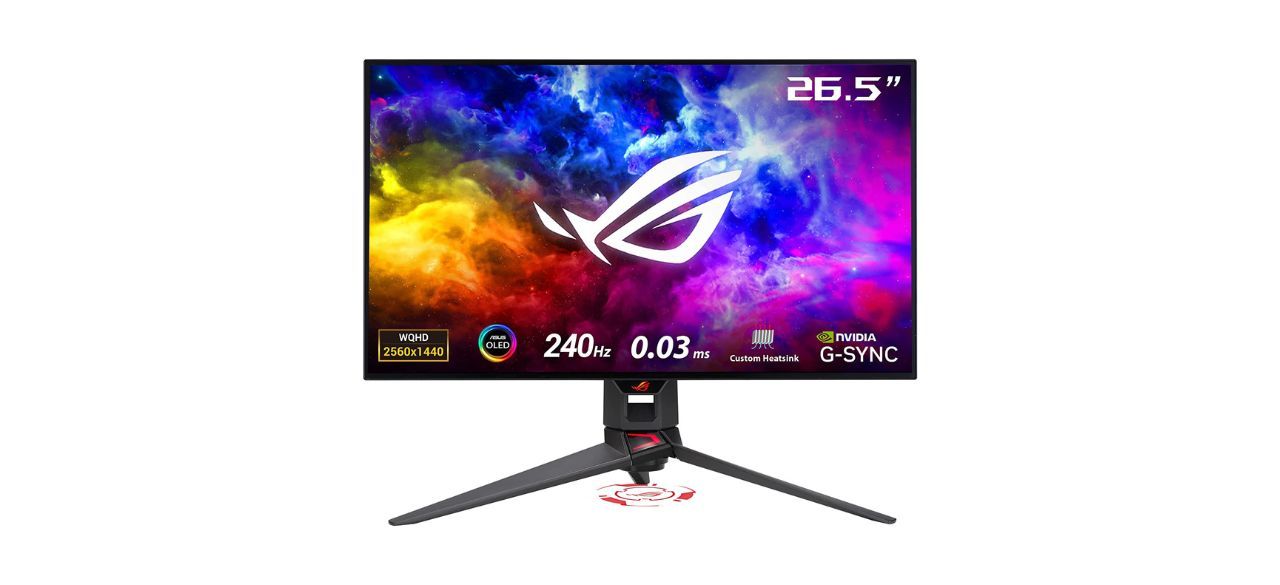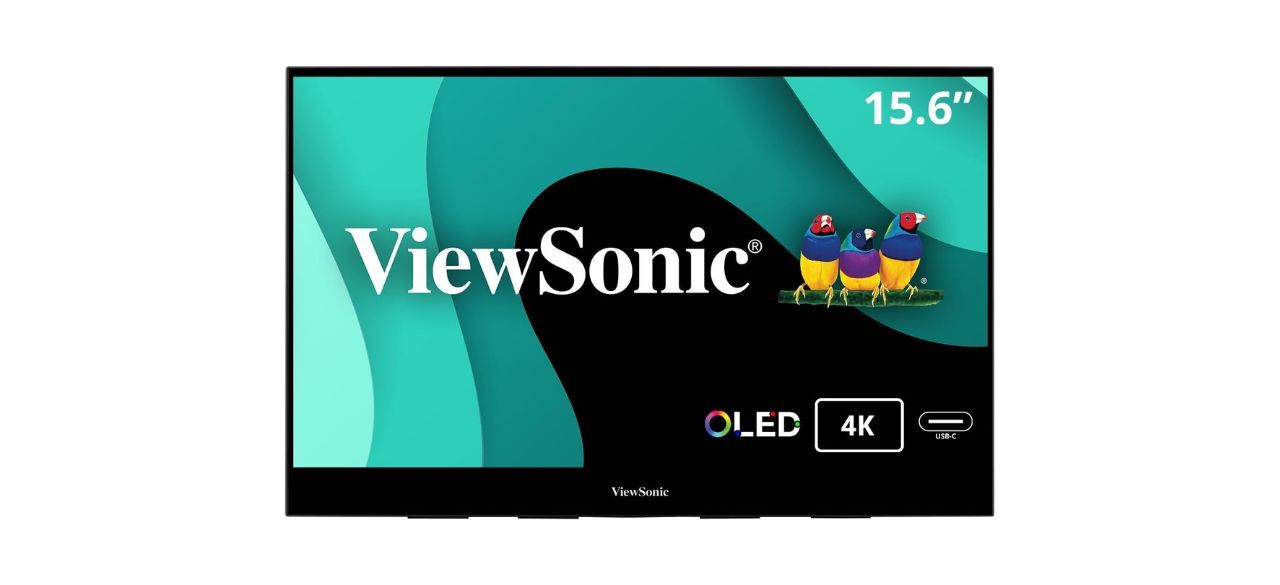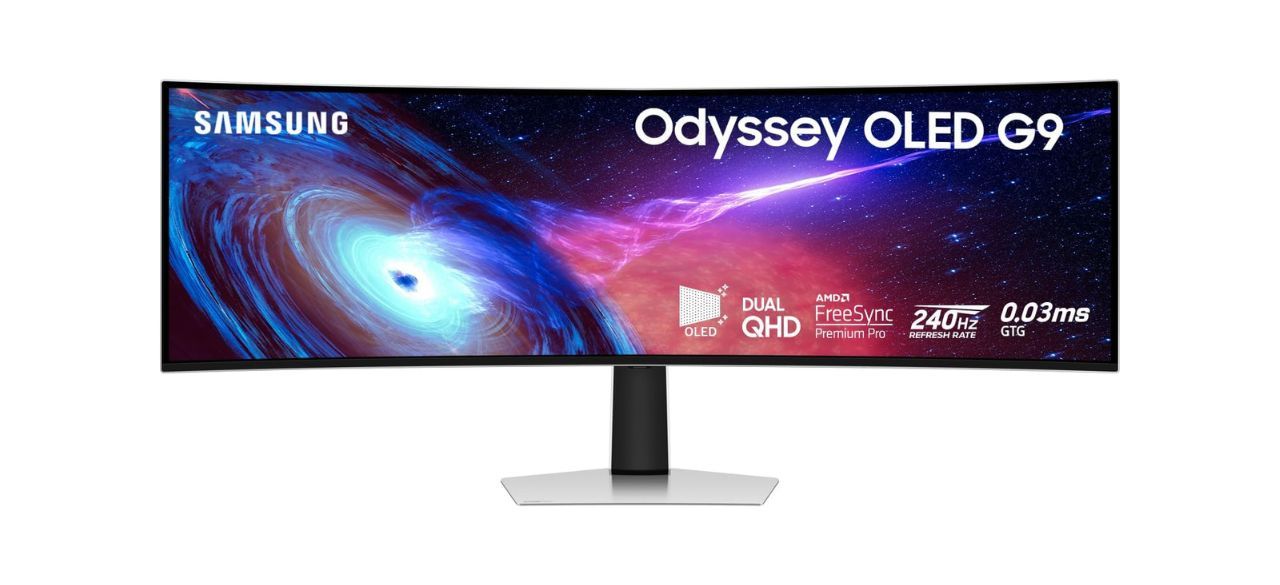Which are the best OLED gaming monitors?
From bulky CRTs to ultra-thin displays, gaming monitors have undergone many changes in the last few decades. As development in computer components and gaming consoles drove a need for better, faster and clearer visuals, monitors needed to keep up.
For many years, liquid crystal display monitors were the undisputed kings in gaming, but their use slowly started to diminish in the mid-2000s. The new light-emitting diode technology was thinner and had better visual quality. The natural progression led to organic light-emitting diodes, making monitors and TVs even thinner.
Shop this article: Asus ROG Swift, ViewSonic 15.6-Inch 4K UHD Portable OLED Monitor and Samsung 49-Inch Odyssey G93SC Series OLED Curved Gaming Monitor
What to know before you buy an OLED gaming monitor
Display size and image quality
Graphical quality is crucial for an enjoyable video game experience. The heavy lifting is done by the console or the computer’s graphics card, but that’s not all. The size of the monitor also plays a big role in clarity and level of detail.
While it’s usually better to have a big screen, consider where you play most of your games and available space there. A massive monitor isn’t always practical, and not all games look amazing on a curved display.
As for professional gamers, they almost always go for a 24-inch monitor. There are various reasons for this, but the most important is that, at this size, they can have faster frame rates than larger screens.
In terms of image quality, OLED is superior to traditional LED technology. It’s based on the same principle, but OLED uses organic molecules to produce colors through an electric current. This produces more vivid colors and a wider viewing angle while using less power.
Refresh rate
A monitor’s refresh rate determines how many frames per second it can display. Most video games are coded for 60 frames per second, but some consoles and titles can go higher. Especially for multiplayer games or first-person shooters, 120 fps is becoming the standard.
Therefore, if you want your monitor to keep up with everything on the screen, it’s best to look for a high refresh rate, measured in hertz. You’ll want at least 60hz for slower-paced games, while higher-paced games require at least 144hz. Some high-end monitors reach refresh rates of 500hz or more.
What to look for in a quality OLED gaming monitor
Nvidia G-Sync and AMD’s FreeSync
When there are fast-moving objects on the screen, such as in sports, racing or shooter games, a fast refresh rate can help to smooth out the images. But as video games become increasingly detailed, monitors need all the help they can get. That’s why a good-quality gaming display incorporates smoothing technology from two of the largest graphics card manufacturers.
Nvidia’s G-Sync and AMD’s FreeSync are essentially the same in their capabilities, primarily focused on eliminating screen tearing. This happens when the content’s frame rate is faster than the monitor, producing a glitch effect. G-Sync and FreeSync adapt the monitor’s frame rate to the graphics card instead of the card adapting to the monitor.
Multiple connections
You might only play video games on one platform at a time, but you don’t want to swap output cables when changing systems. The best solution for that is to get a monitor with multiple connections.
A few HDMI ports let you connect a computer and a gaming console, and you only need to press a button to access either. Depending on your needs, a few DisplayPort connections will come in handy, as will several USB ports.
Mountable on a wall
Gaming monitors can be relatively large, and if you have limited space on your desk, you might consider mounting the monitor. This can typically be done in several ways, but the two most common methods are mounting it on a wall with a bracket or keeping it upright through a monitor arm.
But there is one aspect that a good gaming monitor will have: compatibility with the VESA mounting system. The Video Electronics Standards Association set out a recommended design for the back of monitors. This ensures that the bracket and mounting holes line up perfectly with the monitor.
How much you can expect to spend on an OLED gaming monitor
The price depends on the monitor’s size and capabilities. Cheap gaming monitors cost $400-$500, while high-quality monitors can cost $800 to $2,000 or more.
Best OLED gaming monitor picks
Top OLED gaming monitor
Asus ROG Swift 26.5-Inch OLED DSC Gaming Monitor
This Asus monitor is a top choice for many, offering both an immersive gaming experience and suitability for office use. The 1440p resolution enables crisper images compared to 1080p monitors; paired with 99% DCI-P3 color space, this 26.5-inch monitor offers stunning visuals. The 240hz refresh rate ensures smooth motion and the response time is fast at 0.03 ms. An anti-glare coating reduces reflections on the screen and a blue light filter makes gaming easier on the eyes. What’s more, this Asus gaming monitor is G-SYNC compatible, so you won’t experience screen tearing.
Top OLED gaming monitor for the money
ViewSonic 15.6-Inch 4K UHD Portable OLED Monitor
This is the top budget gaming monitor you can buy. It’s perfect for taking on the go — the 15.6-inch portable gaming monitor weighs only 1.5 pounds and is 0.6 inches thick, so it fits easily in a laptop backpack or purse. The 4K OLED gaming monitor provides superior image quality compared to 1080p and 1440p monitors. It even has dual speakers. This ViewSonic monitor also comes with a screen cover and a built-in stand. Keep in mind that the refresh rate is only 60hz, so it may not be suitable for faster-paced video games, such as first-person shooter and racing games.
Worth checking out
Samsung 49-Inch Odyssey G93SC Series OLED Curved Gaming Monitor
If you’re looking to splurge on a gaming monitor, you should seriously consider this curved monitor. This ultrawide gaming monitor is 49 inches, with a curved design that makes content look more three-dimensional — you’ll truly feel like you’re inside the game. This Samsung gaming monitor has solid 1440p resolution, a 0.03ms response time and a 240hz refresh rate. Quantom Dot technology offers a brighter screen with more vivid colors and intense contrast. DisplayHDR TRUE BLACK 400 shows true black and dark colors with impressive depth.
Prices listed reflect time and date of publication and are subject to change.
Check out our Daily Deals for the best products at the best prices and sign up here to receive the BestReviews weekly newsletter full of shopping inspo and sales.
Copyright 2024 BestReviews, a Nexstar company. All rights reserved.






